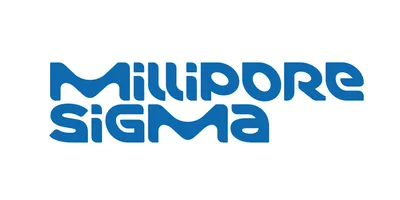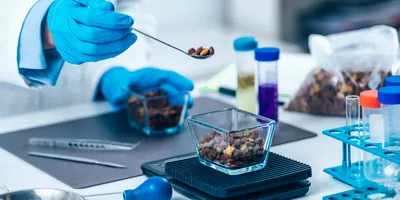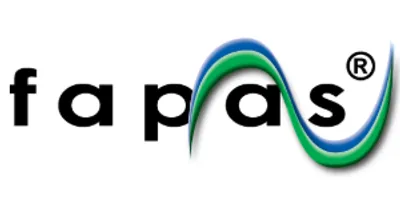The Role of Titration in Wine Chemistry and Production
Winemaking begins with ordinary fruit and ends, sometimes decades later, with a solution of hundreds of identifiable acids, esters, salts, small molecules, and, of course, ethyl alcohol. Although basic viticulture and fermentation have been around for millennia, modern technology—including analytic instrumentation—has greatly improved consistency and quality. High-end producers tout the uniqueness of their grape blends, growing conditions, and, above all, how grapes are processed and turned into $2,000-per-bottle Chateau Lafite-Rothschild. As with all process industries for high-value products, for winemakers the process is the product.
Yet in a manufacturing environment, producers are limited to studying just a fraction of the ingredients contributing to a vintage’s characteristic taste and quality.
In this age of readily available high-end analytics, vintners remain interested, by and large, in a handful of diagnostic parameters, among them titratable acidity, volatile acidity, and free and total sulfur dioxide, all of which are accessible through titration.
That’s not to say that more sophisticated approaches to assessing wine quality are not used. Liquid chromatography- mass spectrometry, for example, provides a signature spectrum of volatile and semi-volatile taste and quality attributes. Bruker (Billerica, MA) has an application note on nuclear magnetic resonance analysis for profiling these components, and inductively coupled plasma has been a mainstay for oenologic elemental analysis since at least the 1980s.
Understanding Titration in Wine Analysis: Analytics vs. Reality
Unfortunately, for most commercial wineries competing in increasingly global markets, gas chromatography or liquid chromatography is impractical. “The acquisition cost of these instruments is prohibitive, maintaining staff knowledgeable enough to run those instruments is unrealistic, and there are alternative benchtop, wet chemistry analytical methods that meet their needs just as well,” says Maureen Moroney, research associate at the Midwest Grape and Wine Industry Institute (Ames, IA).
Titration has survived in wine labs in part because these signature quality attributes often act as surrogates for more complex, difficult-to-quantify constituents. Additionally, complex instrumental analysis takes time and diverts resources from more pressing activities, such as harvesting before a drenching rain or keeping track of the contents of 400 barrels.
“Titration methods, including associated sample preparation, vary depending on what is being analyzed, but the principle of titrating to an end point is always the same,” Moroney says. Variability extends to the degree to which methods are automated. Small winery labs often perform titrations manually, and conduct the tests during production and afterward as a quality check.
Advanced Lab Management Certificate
The Advanced Lab Management certificate is more than training—it’s a professional advantage.
Gain critical skills and IACET-approved CEUs that make a measurable difference.
“Volatile acidity and sulfur dioxide are both major quality parameters for wine, with legal limits set by the Alcohol and Tobacco Tax and Trade Bureau (TTB), a unit of the U.S. Department of the Treasury.”
Monitoring Constantly Evolving Parameters Through Titration in Wine
“Wine producers need to keep an eye on product during processing because the chemistry of juice and wine is in constant flux until the product is finished, and even beyond that. No two batches are the same, so there is no formula for consistent quality,” Moroney continues. “In-process testing helps guide decision-making on the next process step [and] helps detect problems early, with the potential to intervene appropriately.”
For example, sharply rising volatile acidity during fermentation indicates that microbes such as acetobacter, which produce acetic acid (vinegar) and ethyl acetate, may have entered the system or that the batch has been exposed to oxygen.
For sulfur dioxide (SO2), an additive present in most commercial wines that prevents oxidation and microbial spoilage, free SO2 is protective whereas the bound chemical is not. Winemakers must therefore balance fixed and free SO2, the concentrations of which they determine through titration.
Titratable acidity is more related to the consumer’s sensory perception of wine. “Once the wine has finished fermentation and/or malolactic conversion, it tends to remain fairly stable unless other interventions are made; for example, acidification, deacidification, or cold stability achieved by precipitation of potassium bitartrate,” Moroney notes. “Of the three parameters, titratable acidity is probably measured least frequently, especially as many winemakers tend to rely more heavily on pH measurements for decision-making.”
“Vintners use titration throughout the entire production process,” says Lori Spafford, titration product manager at Metrohm USA (Riverview, FL). “It lets you check raw ingredients—you can check the batch while fermentation is taking place and as a final quality control [QC]. The same titration that is performed during production is also used as a final QC test.”
Key Considerations for Effective Titration in Wine Testing
As with pharmaceuticals, regulators outline in detail what they expect from quality and wholesomeness testing, but they do not mandate or even recommend specific methods. The American Society for Enology and Viticulture, which has no formal regulatory or legal status, recommends the Ripper method for free SO2 and titration-based aeration-oxidation methods to complement segmented flow analyzers, enzymatic assays, colorimetric analyzers, flow injection analysis, and Fourier-transform infrared spectroscopy.
Winery laboratories have wider latitude with respect to which instrument they buy; but in addition to basic titration, they need to consider how a system keeps records, how it connects to computers and other instrumentation, and the instrument’s throughput. Once purchased, the cost of consumables and (excluding depreciation) the price per test will be very similar for different systems, according to Moroney.
Frequently Asked Questions (FAQs) About Titration in Wine
1. What is titration in wine analysis?
Titration in wine refers to the process of breaking down and analyzing wine samples to determine key chemical components such as acidity and sulfur dioxide levels.
2. Why is titration important in the winemaking process?
Titration helps winemakers monitor volatile acidity, sulfur dioxide, and titratable acidity throughout production, ensuring quality, stability, and regulatory compliance.
3. How often should wine titration tests be conducted?
Titration tests are typically performed at multiple stages: during fermentation, after malolactic conversion, and as part of final quality control before bottling.
4. Can small wineries perform titration without advanced instruments?
Yes. Many small wineries rely on manual titration techniques which are cost-effective and sufficiently accurate for essential wine quality parameters.











